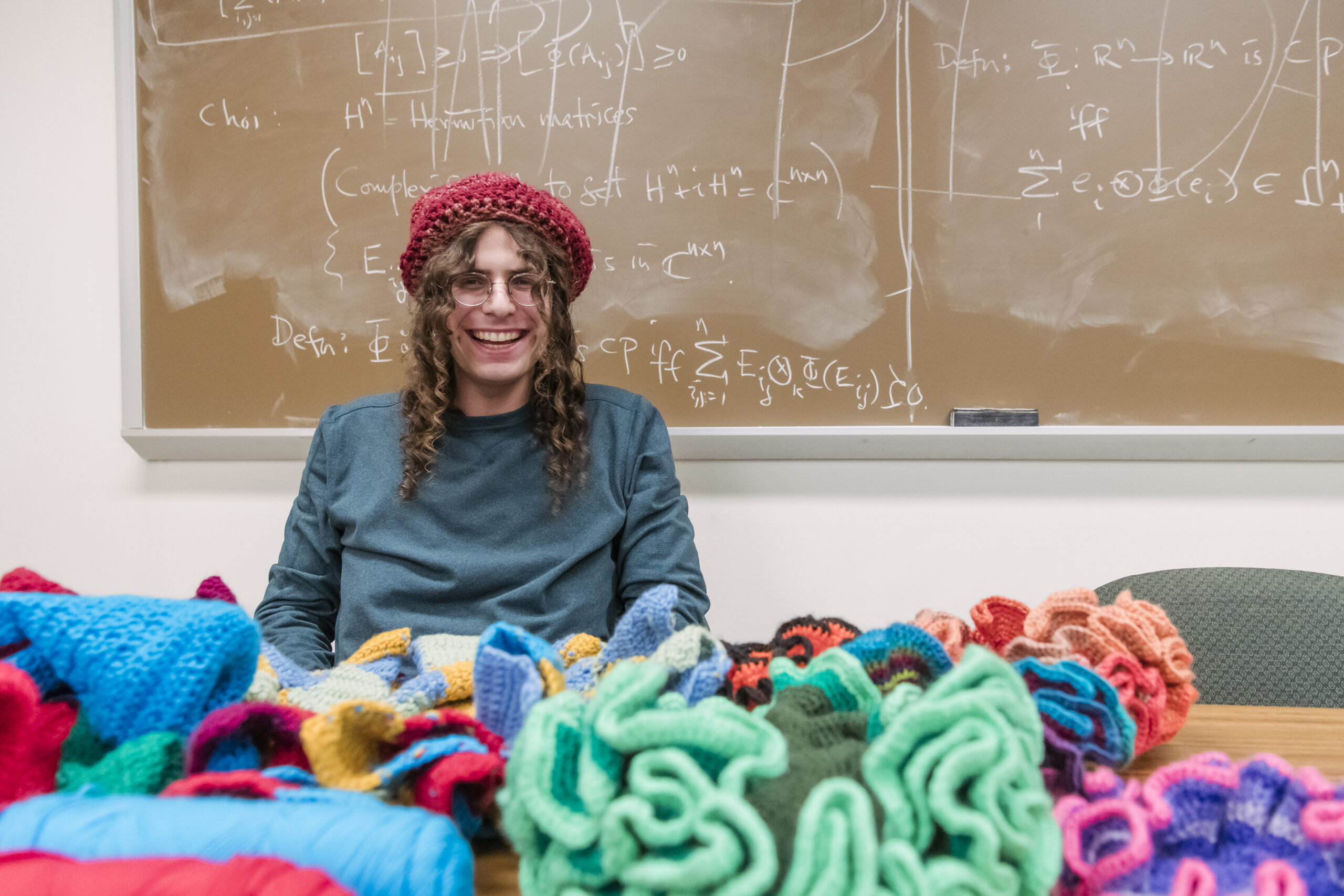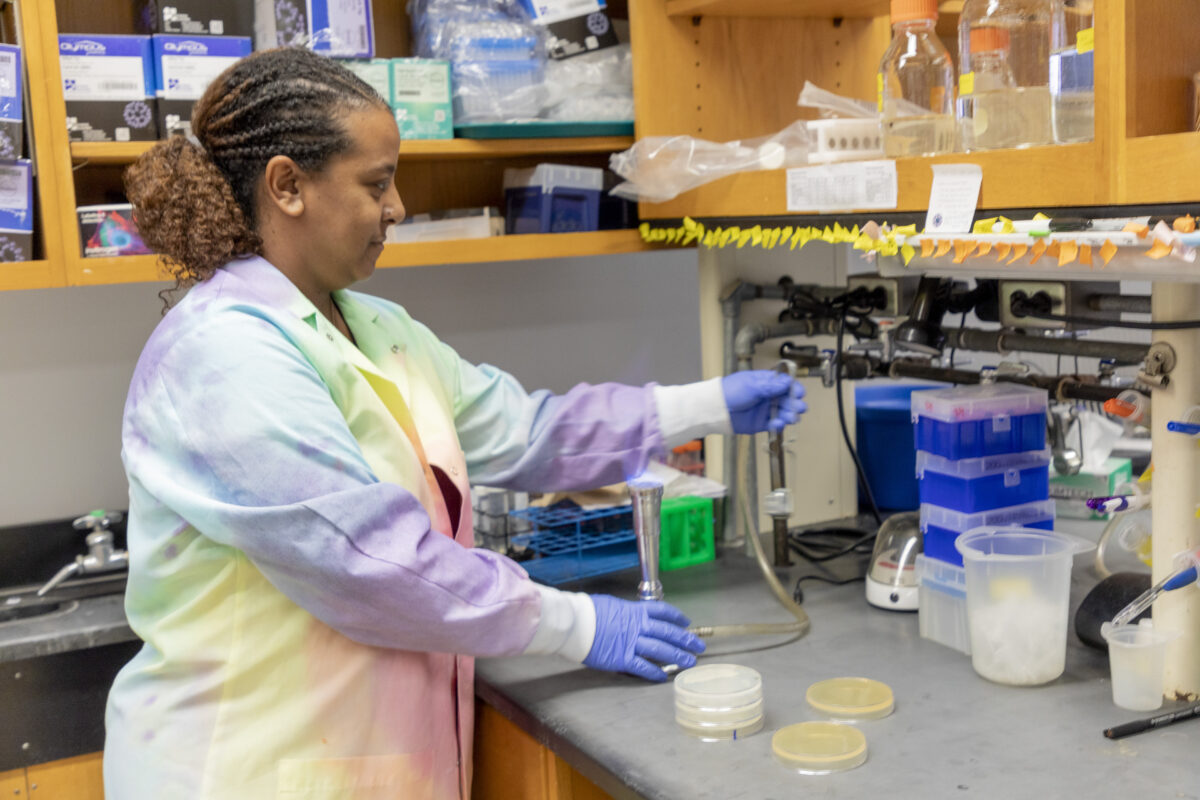In the back of a classroom, at a desk strewn with a colorful palette of commingled notebooks and skeins of yarn, sits Ephraim Ruttenberg ’25, mathematics. His fingers nimbly and nearly subconsciously manipulate a crochet hook while his ears eagerly take in a lecture on differential equations—one of his favorite subjects. Ruttenberg loves unraveling the principles behind complex theorems, and he’s eagerly extended that passion from mathematics to crochet.
Ruttenberg’s first love is math—he only picked up crochet in 2023 after seeing a math YouTuber explaining concepts with crocheted models of mathematical forms. But Ruttenberg’s math-themed crochet, where he creates intricate 3D shapes that bring abstract ideas into the physical world, has quickly become an important part of his life.
“Anything creative and artistic very much appeals to me, and I’m very inspired by what other people can make. Art seems to be a core part of the human experience,” Ruttenberg says. In particular, he says, “I like visual art. And this is the most fun and success I’ve had with making visual art.”
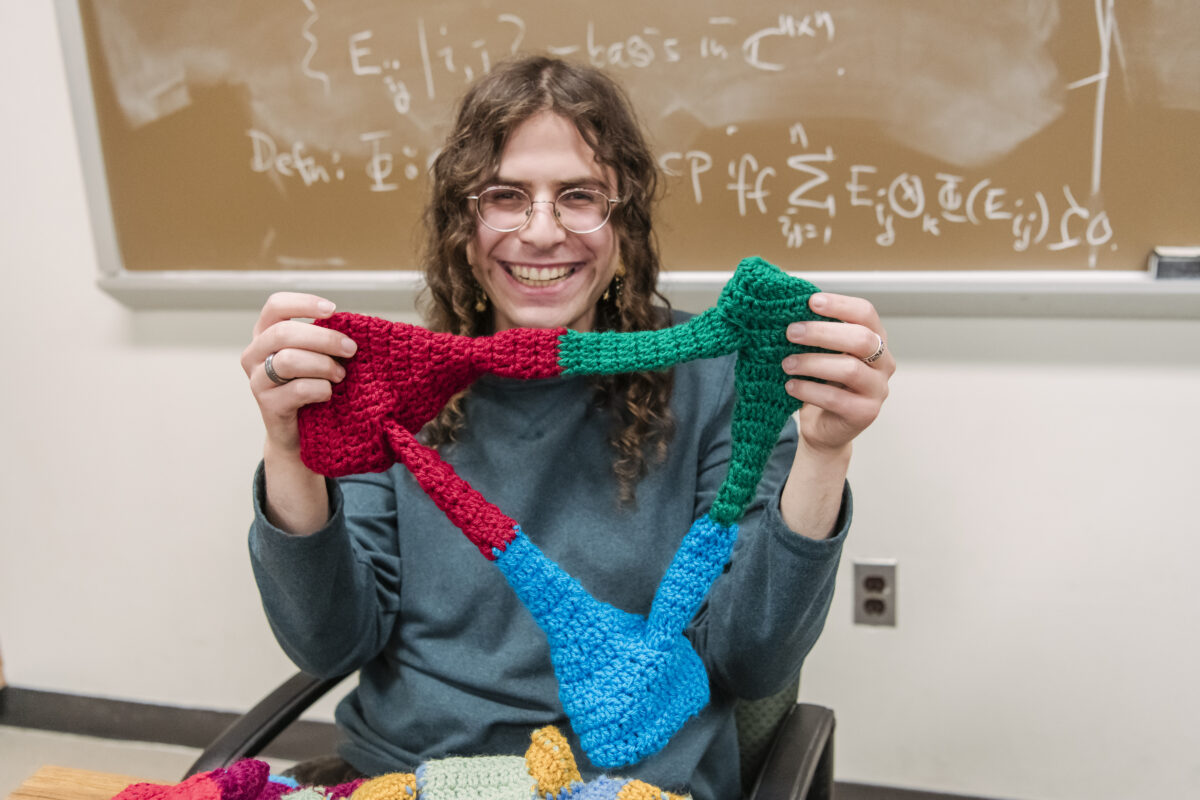
Klein bottles and sea slugs
Although Ruttenberg’s primary motivation for pursuing crochet is as a hobby distinct from mathematics, as something to do with his hands while his mind chews on other things and simply as a way to create beautiful physical objects, he couldn’t help weaving in some math. He relies on a shape’s mathematical properties and reference images to translate them into crochet.
The shapes Ruttenberg creates include Klein bottles, single-sided surfaces reminiscent of Möbius strips closed up on themselves. Ruttenberg created a Klein bottle that can be worn as a hat, and another creation stitches three Klein bottles together. He’s also constructed dozens of what are called saddle surfaces, which are examples of “curved space” and look a lot like a brain coral or a sea slug with all of their folds and convolutions. Ruttenberg used three complete skeins of yarn—that’s nine football fields in length—to stitch the largest of these, and the surface’s curvaceous outer edge measures 50 feet despite it only being about a foot across.
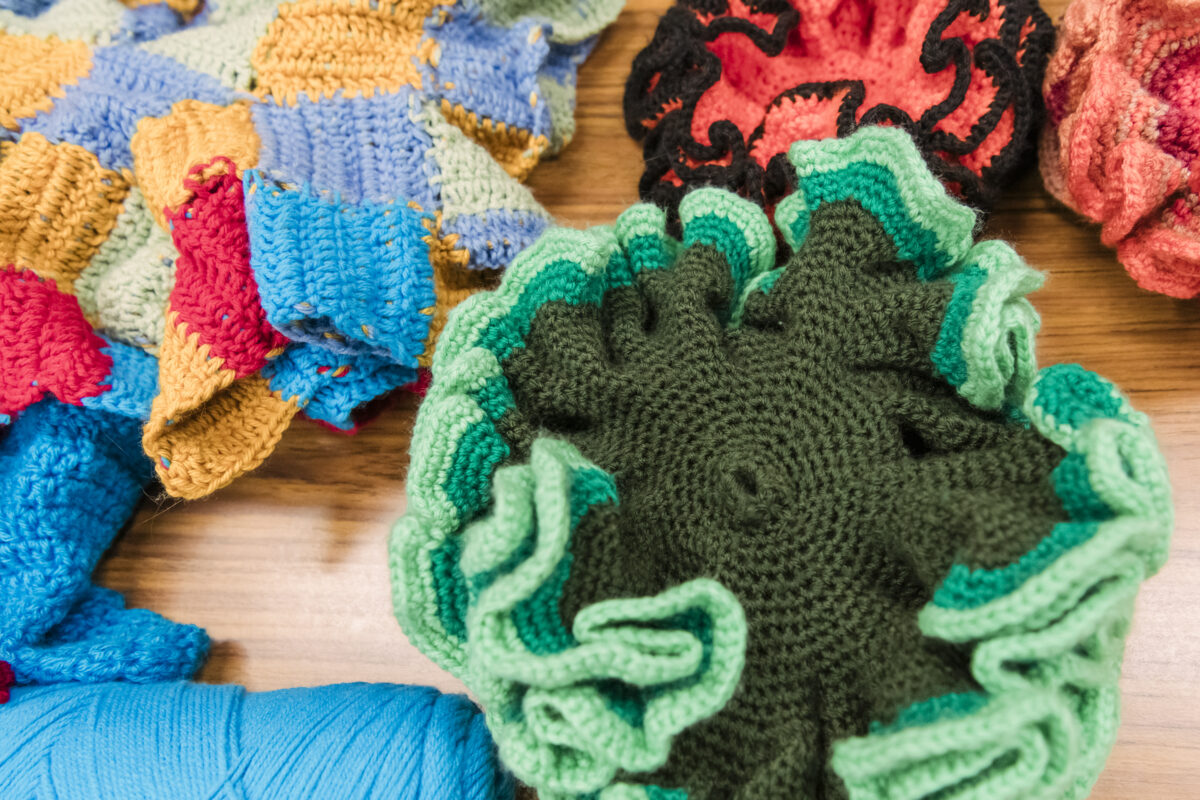
Through his creations, Ruttenberg is hoping to investigate some mathematical concepts “that haven’t been explored in physical reality,” he says. “Also, I would like to do some math about crochet,” he says, such as how the physical properties of a crocheted object influence or define the pattern that describes it. In addition to the math, though, crochet for Ruttenberg is also “a creative, artistic pursuit.”
The beauty of patterns
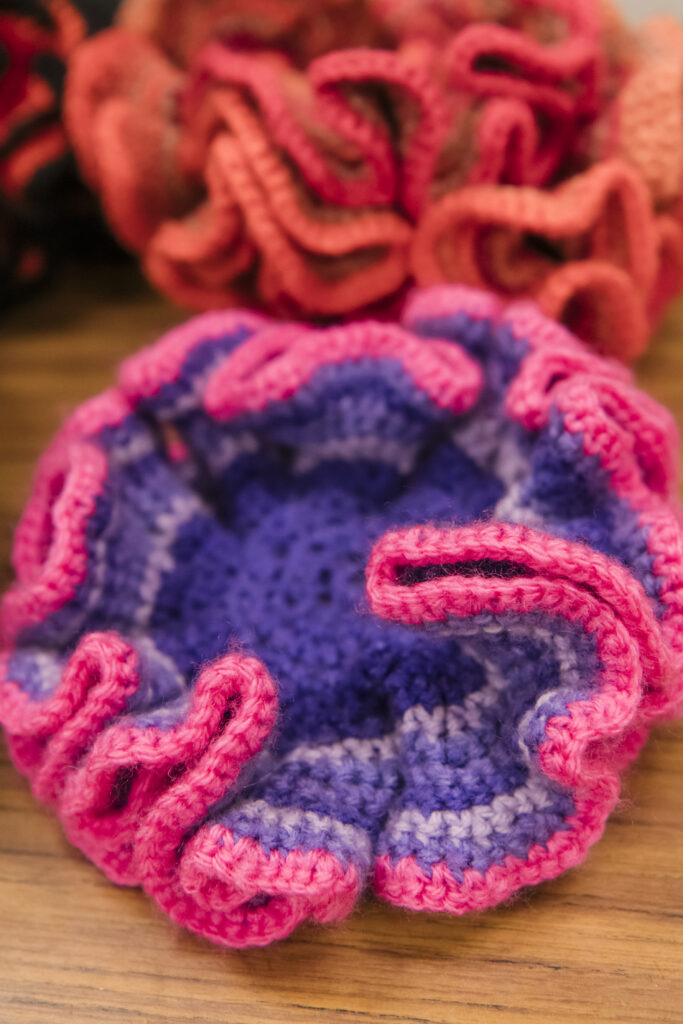
Ruttenberg doesn’t use traditional crochet patterns for his work, choosing instead to invent his own shorthand notation for various stitches. “Because I like to make it up as I go along, it’s a little more satisfying to me,” he says. In fact, the symbols for stitches in crochet patterns echo the symbols and patterns in mathematics that he enjoys. “I was always interested in the aesthetics and visuals of math; all the symbols and things were sort of fascinating to me,” he shares.
This eye for patterns extends to Ruttenberg’s other interests and hobbies, like word games and juggling. “I love English spelling. I think the confluence of different languages is super cool. It makes patterns that I find very aesthetically pleasing,” he says. Ruttenberg is a Scrabble aficionado and typically has an online game going with friends.
Even mathematics has its own language to absorb. While the discipline’s lingo may puzzle non-mathematicians, “Something that I love about mathematics is all the different words, and all the jargon,” Ruttenberg says. “I love that math co-opts all these normal words for very technical things,” he says, like “ring” or “flag.”
With juggling, “There’s some math in there if you get into complicated patterns,” he says. “It’s all about permutations, and ‘How long does this ball stay in the air?’, and all that.”
Threading math joy throughout life
Ruttenberg is selling a few of his creations on Etsy, and he takes time to share his passion for mathematics in other ways. He tutors students from elementary school through college.
“I like the puzzle of teaching someone something, especially if they already have a misconception of the material that’s not serving them,” Ruttenberg says. “That, I find, is a cool puzzle—what’s the core of the misunderstanding here, and how can we give them a better way of thinking about it?”
Justin Webster, associate professor of mathematics and Ruttenberg’s academic advisor, quickly noted his mathematical talent and willingness to help others when Ruttenberg was in one of his courses. Ruttenberg is the president of UMBC’s chapter of Pi Mu Epsilon, the national mathematics honor society, which serves as UMBC’s math club. Pi Mu Epsilon hosts events for students and participates in outreach at local middle and high schools.
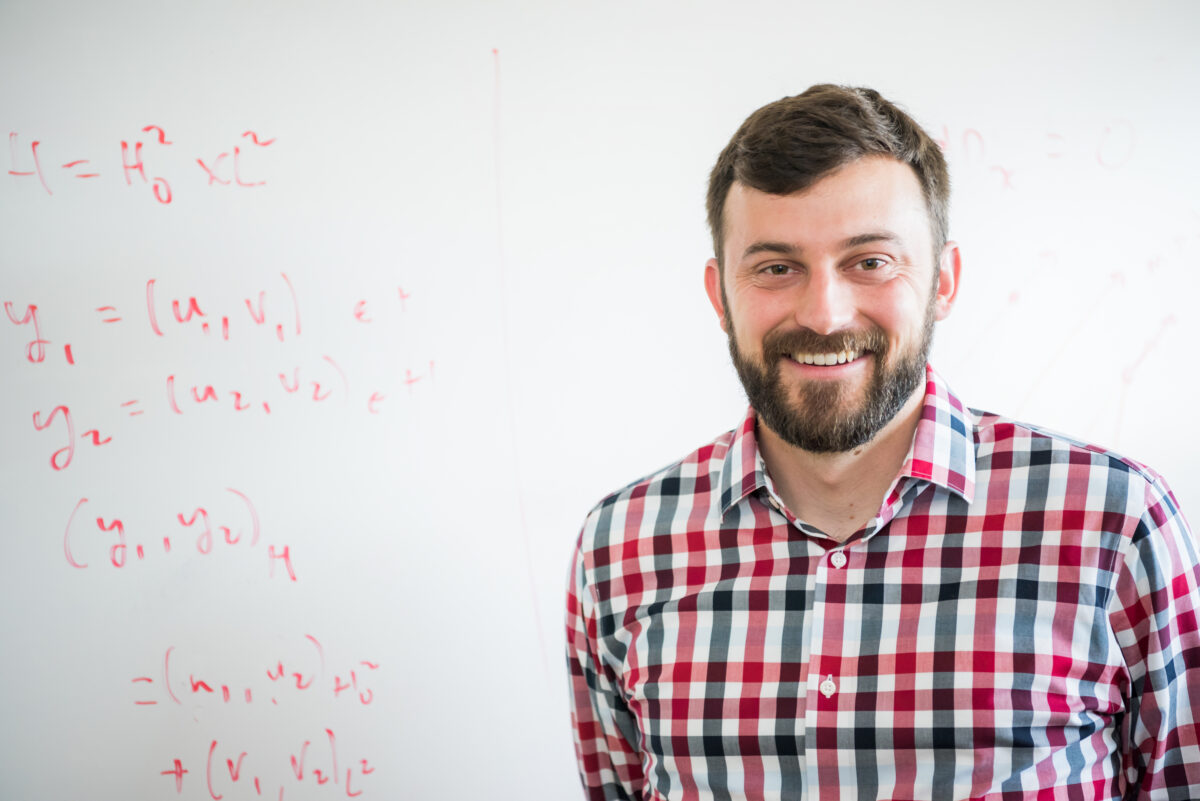
At these events, “Ephraim’s crochet work always steals the show,” Webster says. “The students are perplexed and engaged by his work. It is wonderful to have something which is both visual and tactile to engage the younger students.”
In part as a result of Webster’s mentoring, Ruttenberg plans to pursue a Ph.D. after graduating from UMBC. Exactly what he’ll study is uncertain. “Ephraim’s interests are very broad. And, like him, they are unique,” Webster says. “There is a certain amount of intellectual confidence that he has, which is rare.”
Ruttenberg will carry that confidence paired with generosity as he moves forward, melding his artistic and mathematical instincts in the world as he perceives it—a world where abstract theorems collide with soft fibers, and the geometry of a sphere meets the warmth of scarves. His work proves that equations need not be confined to dusty textbooks; they can be stitched into existence, one loop at a time.
Tags: CNMS, MathStat, Spring 2024

